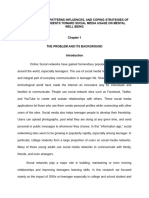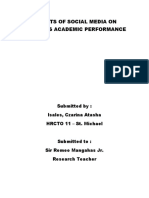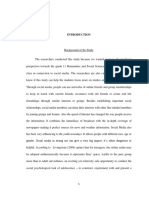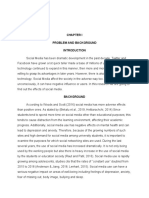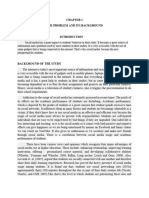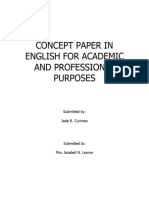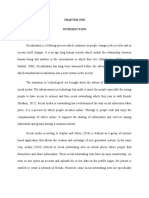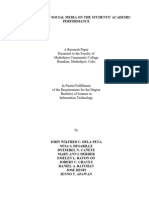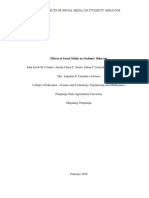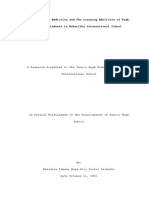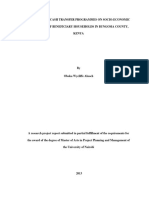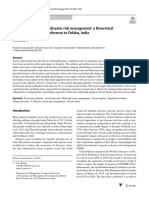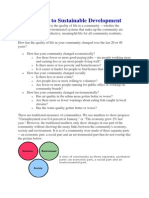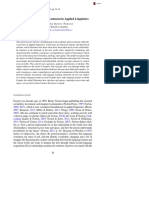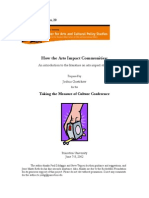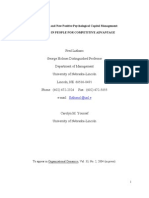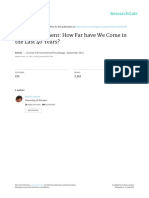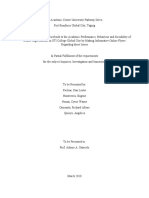0% found this document useful (0 votes)
201 views15 pagesSocial Media Impact on Grade 12 Students
This chapter reviews related literature on social media and its effects. It discusses how social media has been defined in various ways as an online tool for sharing information and connecting with others. Studies have examined the development of social media platforms over time and how their interfaces, user engagement, and revenue models have evolved. Research also looks at how young people's media environment has changed with more options and greater access through different media platforms. The literature explores both positive and negative impacts of increasing social media usage.
Uploaded by
erynharvey.corpuzCopyright
© © All Rights Reserved
We take content rights seriously. If you suspect this is your content, claim it here.
Available Formats
Download as PDF, TXT or read online on Scribd
0% found this document useful (0 votes)
201 views15 pagesSocial Media Impact on Grade 12 Students
This chapter reviews related literature on social media and its effects. It discusses how social media has been defined in various ways as an online tool for sharing information and connecting with others. Studies have examined the development of social media platforms over time and how their interfaces, user engagement, and revenue models have evolved. Research also looks at how young people's media environment has changed with more options and greater access through different media platforms. The literature explores both positive and negative impacts of increasing social media usage.
Uploaded by
erynharvey.corpuzCopyright
© © All Rights Reserved
We take content rights seriously. If you suspect this is your content, claim it here.
Available Formats
Download as PDF, TXT or read online on Scribd
/ 15

